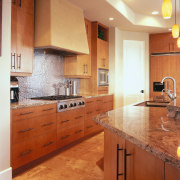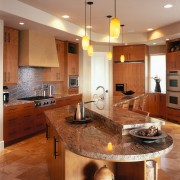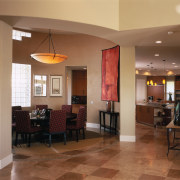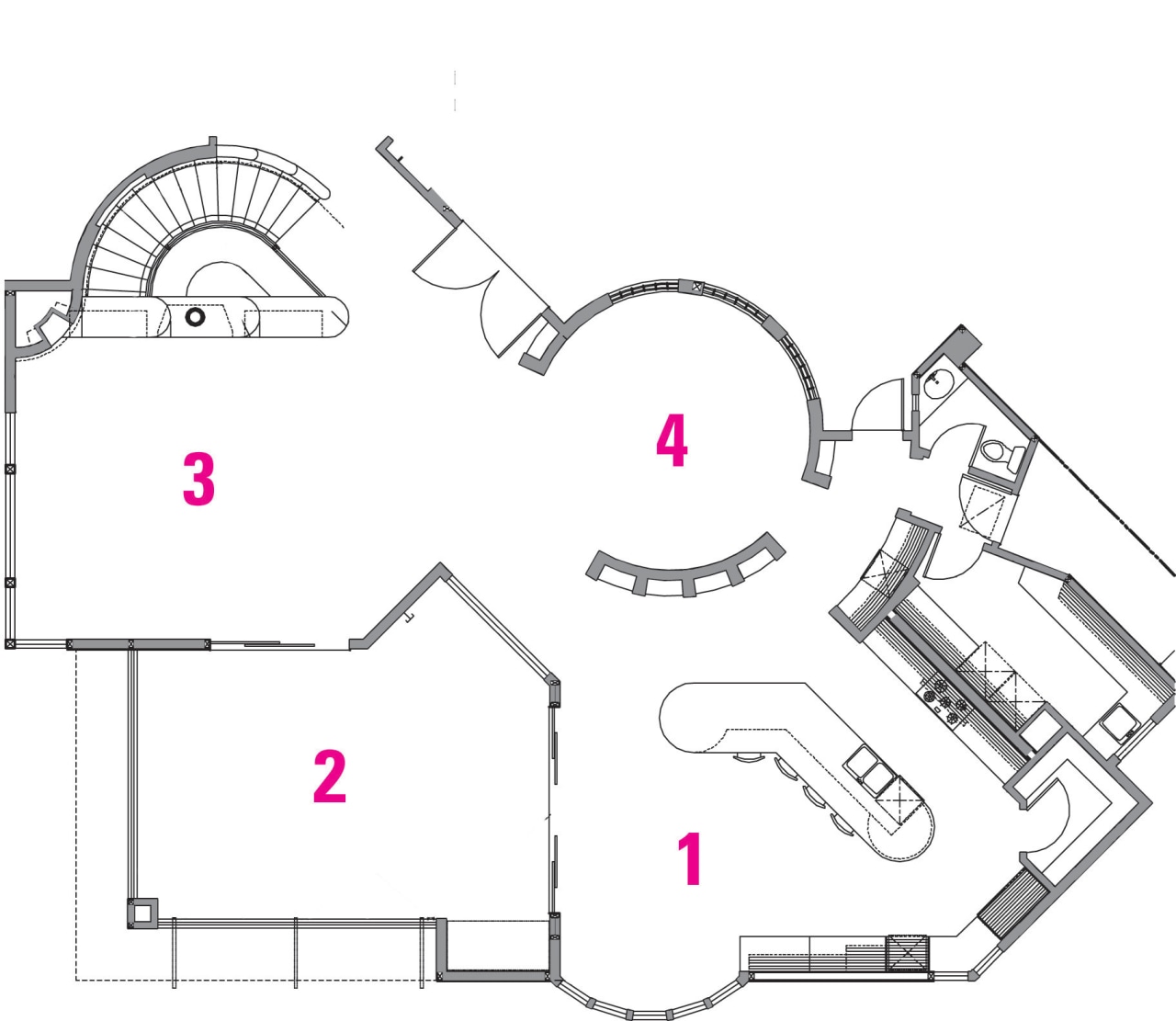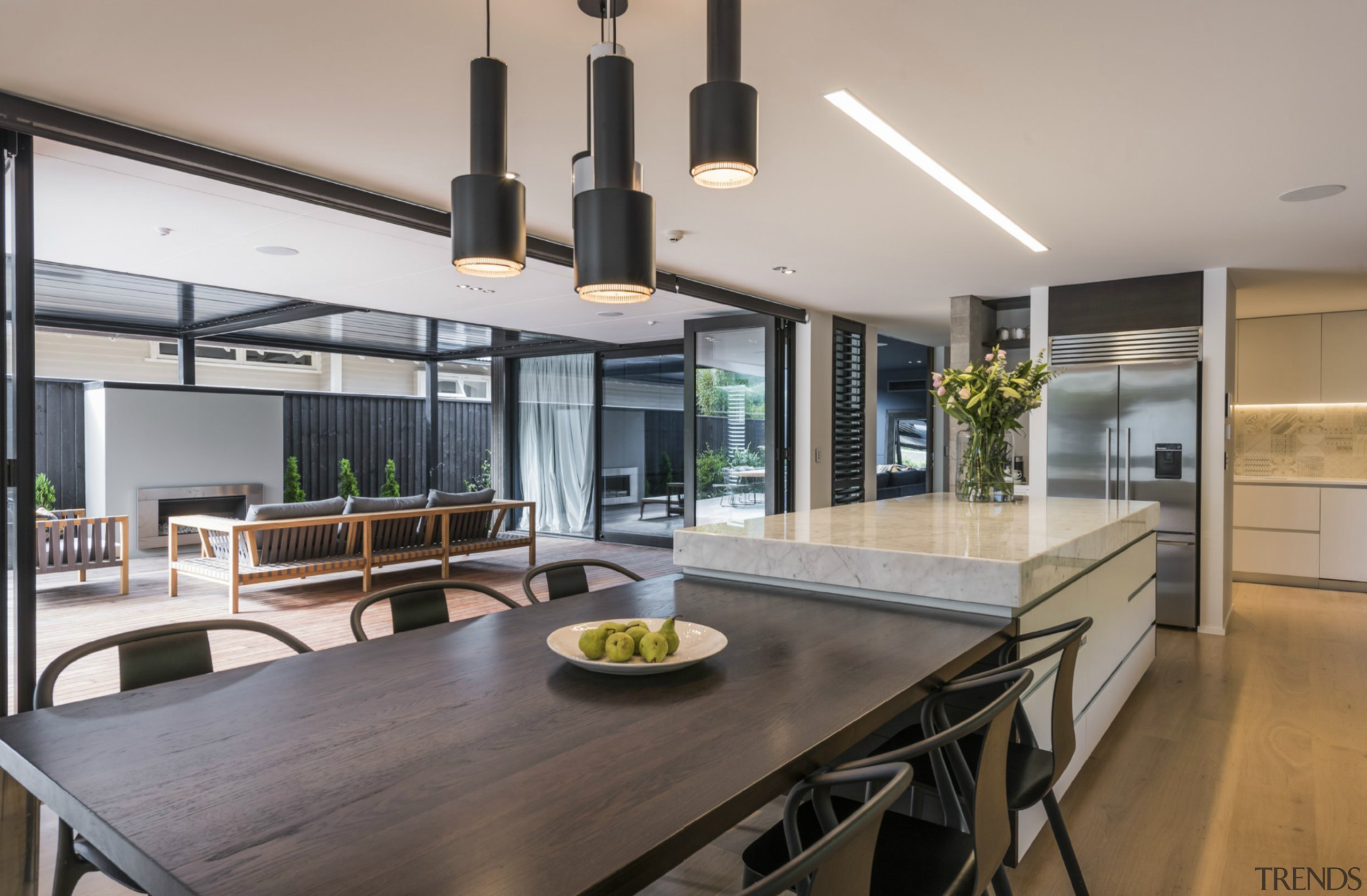Culinary art
A focal point for entertaining, this kitchen also provides a feast for the soul through the incorporation of gallery space for the owners' art collection

To design a truly social interior space, an architect must provide flow both within and between rooms.
In many open-plan living spaces, the kitchen forms the central hub between indoor and outdoor areas.
The great room and kitchen in this house designed by James McCalligan of James McCalligan Architects open out onto a deck and outdoor cooking area, and there is a connecting corridor between the rooms. This provides a great space for guests to circulate through and around when both sets of double doors to the deck are open. The circulatory flow between the kitchen and great room is further enhanced by the use of a curved radius wall and the consequent absence of corners.
The homeowners are great patrons of the arts and have an extensive collection of paintings, wall-hangings and pottery. An important aspect of the design brief was to provide what McCalligan describes as livable gallery space, a concept which extends to the design of the kitchen.
Within the walls enclosing the kitchen and great room, McCalligan created niches, some of which were specifically designed with the dimensions of particular pieces of pottery and sculpture in mind.
For the benefit of those who stop to ponder the artworks, each niche is down-lit. The architect also provided enough space between the display wall and the wall it faces to prevent the onlookerblocking the path from the kitchen to the great room and feeling in the way.
The owner chose cabinets in hemlock, because of the wood's light tone and rich grain and texture. The stainless steel ventilation hood has a plaster coat with a lime finish to blend with the tone of the cabinetry which surrounds it.
The backsplash goes to the opposite extreme. Metallic ceramic tiles produce a striking contrast between their artificial texture and patterning and the kitchen's natural materials.
The subtle patterning of the stone flooring and granite countertops is understated, yet visually interesting and in a natural style that will not date.
A row of pendant lights follows the line of the kitchen island. They introduce a soft, yellow light which brings out the warm tones of the room's wood and stone, and further defines its distinct zones.
In addition to the formal dining room, the kitchen offers two casual areas to dine the kitchen island and a smaller table for intimate meals.
For more details, contact James McCalligan Architects, 3000 Cleveland Ave, Suite 200, Santa Rosa, CA 95403, phone (707) 578 4525, fax (707) 578 3742. Email: jim@mccalligan.com. Website: www.mccalligan.com.
Story by: Trendsideas
Home kitchen bathroom commercial design
Diving into nature
Classic looks, contemporary efficiency
Personality plus
